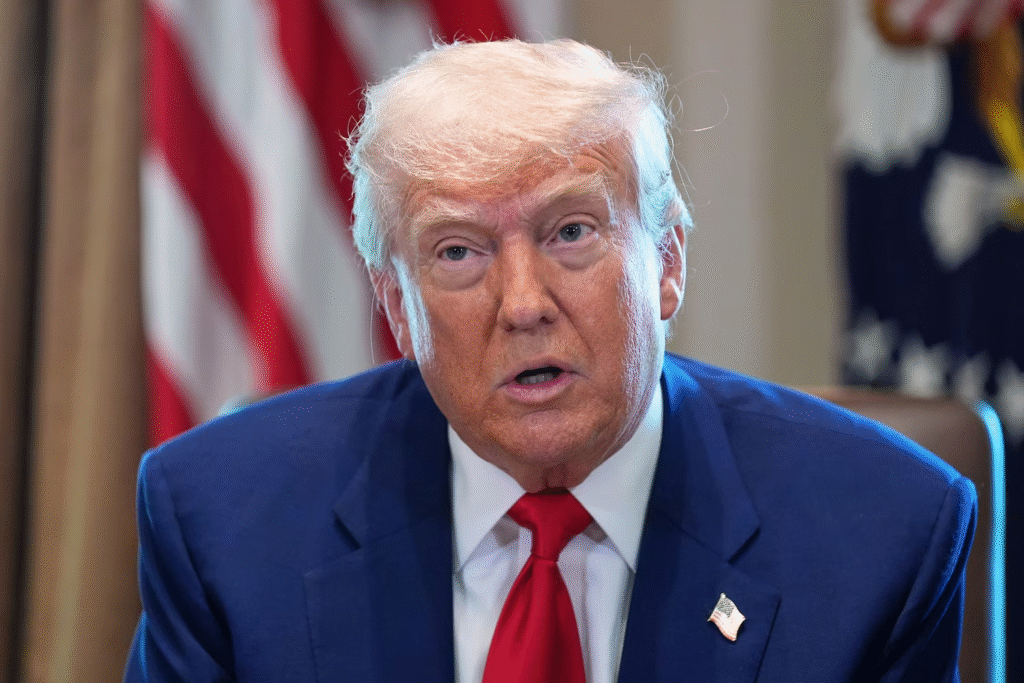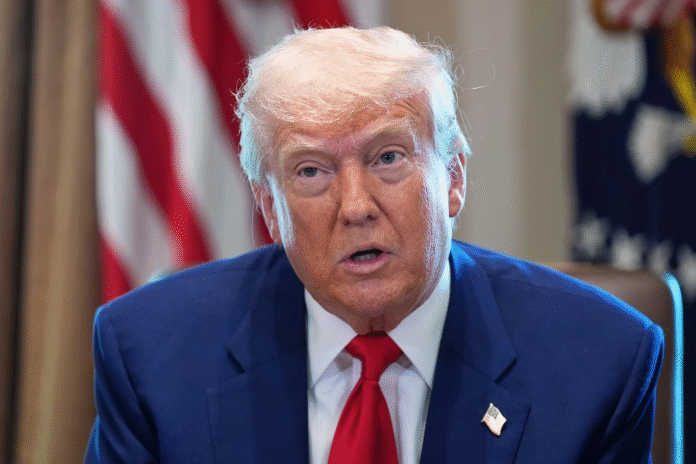
President Donald Trump, marking 100 days into his second term, made clear that he’s not losing sleep over warnings of higher prices and economic strain resulting from his aggressive tariff policies — even when those consequences might hit home in the toy aisle.
At a Cabinet meeting held Wednesday, Trump addressed criticism surrounding his sweeping new tariffs, including a staggering 145% levy on Chinese goods. Acknowledging that prices may rise for American families, he brushed off concerns with characteristic bluntness.
“Maybe the children will have two dolls instead of 30,” Trump remarked. “And maybe the two dolls will cost a couple of bucks more.” To him, the trade-off was not only acceptable but emblematic of a larger mission: resetting America’s relationship with global trade.
This casual framing of potentially significant household cost increases underscores a broader Trump worldview, one that sees economic self-reliance and protectionism as necessary—even noble—even if it means consumers pay more and get less.
Rhetoric vs. Reality
Trump’s message came as part of a celebration of what he views as a strong start to his second term. Yet, the economic data tells a more complicated story. Hours before his remarks, the Commerce Department reported a 0.3% contraction in GDP during the first quarter of 2025 — a signal that the economy may already be feeling the weight of his policies.
Rather than acknowledge any role his new tariffs might have played, Trump deflected responsibility, blaming the slump on his predecessor, President Joe Biden.
“This is Biden’s stock market, not Trump’s,” he wrote on his Truth Social platform. And he didn’t stop there — he even preemptively blamed Biden for the upcoming quarter’s data, arguing economic momentum doesn’t shift “on a daily or hourly basis.”
This move to retroactively distance himself from downturns while taking credit for past upswings is classic Trump — a political sleight of hand designed to reinforce the narrative that his leadership, no matter the metrics, is directionally correct.
The Tariff Gamble
Trump’s economic team insists that his new round of tariffs — which range from 10% baseline duties on all foreign imports to sector-specific penalties on aluminum, steel, and automobiles — is a necessary recalibration of global trade practices.
The biggest target of this strategy is China, which Trump has long accused of exploiting U.S. markets through unfair trade practices. “We’ve been abused by other countries at levels that nobody’s ever seen before,” he said in a recent interview with ABC News.
But critics warn the price of this tough stance will ultimately be paid by American businesses and consumers. Financial analysts project the tariffs could cost the average U.S. family thousands of dollars annually in higher prices for goods. The markets have already taken notice: stocks tumbled in the wake of the announcement, wiping out trillions in value.
American-Made at a Cost
Still, Trump’s defenders are adamant that Americans are willing to bear the cost for the sake of sovereignty and quality. At a White House briefing on Thursday, Deputy Chief of Staff Stephen Miller — himself a parent of young children — argued that paying more for domestically produced toys was a fair trade-off.
“If you had a choice between a doll from China that might have lead paint in it… and a doll made in America to a higher regulatory standard, yes, you probably would be willing to pay more,” Miller said.
He presented the tariffs not as a burden, but as an investment in safety, quality, and national pride. The administration hopes that message resonates with Americans frustrated by decades of outsourcing and anxious about global competition.
Yet it remains to be seen how many families will see a pricier Barbie alternative as a patriotic victory — and how many will see it as a dent in their already-stretched wallets.
Selling Sacrifice
What’s perhaps most striking is how directly Trump has chosen to confront — and largely dismiss — the impact of his trade war on everyday people. When ABC’s Terry Moran pressed him on concerns voiced by voters who feel blindsided by higher costs, Trump’s response was blunt: “Well, they did sign up for it, actually.”
It’s a clear reminder that for Trump, the campaign promises weren’t just rhetoric — they were a mandate for economic nationalism, even if that means short-term discomfort.
“I could’ve left it that way,” he said, referencing the global trade system. “At some point, there would’ve been an implosion… But I said, ‘No, we have to fix it.’ I’ve wanted to do this for many years.”
The underlying philosophy is simple: better to endure controlled economic pain now than suffer a systemic collapse later. It’s a risky strategy — one that leans on patience, loyalty, and belief in a long-term payoff.
A Political Price?
But political capital, like consumer patience, is not unlimited. While Trump enjoys solid support among his base, the broader electorate may not be as forgiving if inflation returns, jobs are lost, or growth stalls.
With the 2026 midterms already on the horizon, the question is whether voters will still support a strategy that could reduce their purchasing power, strain small businesses, and rattle financial markets.
For now, Trump seems unfazed. “Great times are ahead,” he told ABC. Whether that’s confidence or bravado — and whether Americans will accept “two dolls instead of 30” as the cost of economic realignment — remains to be seen.
4o


